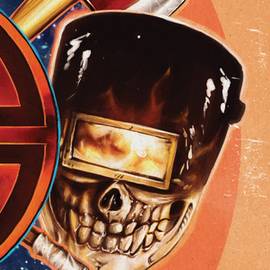Oh, John Dies at the End… You’re something of a problem child.
Maybe it’s the dad in me, John Dies at the End. I sat up late with you. I listened to your whimpering. I tried to decipher your incomprehensible babble. Eventually, I got a little frustrated. I didn’t want to; it just happens. Finally, when you quieted down, I slipped out and wondered if I had somehow failed you.
I have decided that I did not fail you. You let me down, sport. I’m not mad at you, John Dies at the End. I’m just disappointed.
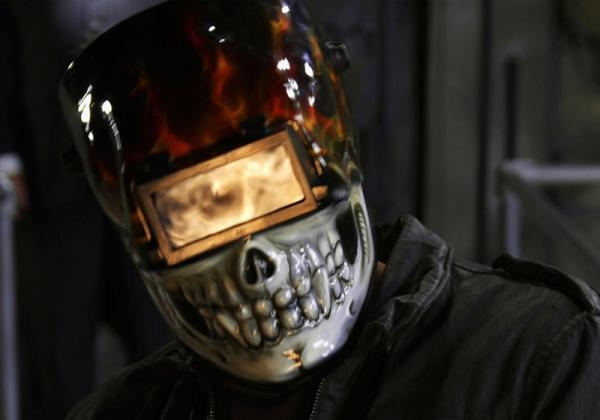
Based on the novel by David Wong (which I now wish I had read so that I’d know just how far off the beam the film is), John Dies at the End has been adapted for the screen by its director, Don Coscarelli, who has a certain amount of schlock movie cred as the director of The Phantasm series, the Bruce Campbell weirdfest Bubba Ho-Tep, and The Beastmaster. (Repeat: The freakin’ Beastmaster. Eric Singer, little ferrets running around, John Amos as a badass warrior in a leather diaper…? Good stuff.) And given Coscarelli’s track record, John Dies at the End is certainly not alone in the category of hip, bizarre films with some cool gimmicks but more problems than virtues.
In this slack(er) exercise in paranormal investigation and elimination, our hero is Dave (Chase Williamson), who mostly seems sleepy and a little feverish. He is a likable fellow, for the most part, with a vague notion of right and wrong. He doesn’t like to see ladies get picked on, for example; he also tries his best to help out his 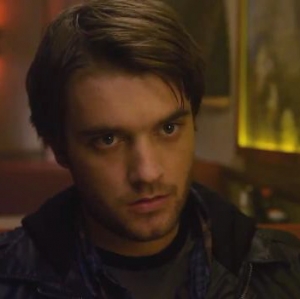 best friend when it seems that the poor guy has OD’d. Turns out his friend (the titular John, played by Rob Mayes with a sort of meathead charm) has gotten a bad batch of drugs off a keg party soothsayer. Dave himself has a run in with this fortune-teller type, and he is genuinely disturbed by what the mysterious stranger had to say.
best friend when it seems that the poor guy has OD’d. Turns out his friend (the titular John, played by Rob Mayes with a sort of meathead charm) has gotten a bad batch of drugs off a keg party soothsayer. Dave himself has a run in with this fortune-teller type, and he is genuinely disturbed by what the mysterious stranger had to say.
This strange encounter sets in motion a series of events that include: capturing a giant spider, meeting a television mystic named Marconi, adopting a stray dog, talking to the dead through a bratwurst, more supernatural drug use, and the death of his best friend. Or maybe not. To be perfectly honest, the structure of this film is such that it’s hard to know in exactly what order events are occurring.
The ability to read minds, to know more than one should know, is the side effect of the heinous drug referred to in the film as Soy Sauce. This liquid, when injected into the bloodstream, allows the user to access psychic properties, including a rather fascinating ability to slip forward and back in time. The downside, though, is that most everyone who tries Soy Sauce, including John, dies. (Dave, it turns out, is one of the lucky few with a tolerance.) John’s death, however, does nothing to deter the best friends from talking, either on cell phones, through the aforementioned bratwurst, or through a psychic link with the aforementioned dog.
The confusing structure of the film is almost helped by the frame device of an interview Dave gives with reporter Arnie Blondestone, who is played by character acting clinician Paul Giamatti. Giamatti, who is also one of the film’s producers, is clearly having a hell of a good time doing the same (still enjoyable) sleazy shtick that he has trotted out in numerous films. It makes me wonder if he ever gets tired of hearing that he was the best thing in an underwhelming production. But I digress.
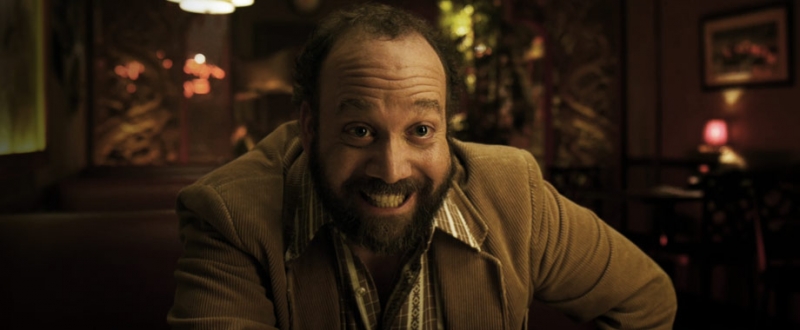
The other problem with Soy Sauce, by the way, is that it creates a bit of a reality rift, allowing bad things, including a Cthulhu-esque being from a parallel Earth, to affect our world. Dave and John must use their (entirely unsubstantiated) prowess as demon killers to travel to the other dimension and stop the big purplish eyeball monster from … doing something. Eating us, I think.
At various points, this film reminded me a lot of a story being told by a small child: every few minutes, a new character or plot point would pop up with an air of “Oh yeah, and then this happened!” The result is something less than coherent.
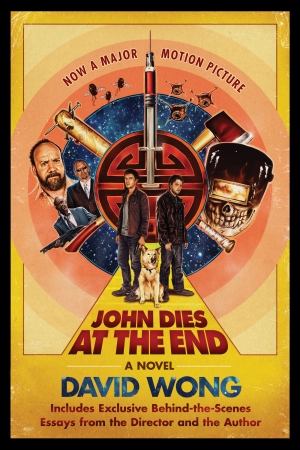 That is not to say that John Dies at the End is completely without merit. It has an interesting premise, and Dave’s voiceover narration is edgy and fun. Furthermore, the movie has some clever turns of phrase, some genuinely funny moments, and the best penis joke I think I’ve ever seen committed to film. But there are no true scares, nor any true laugh-out-loud moments. The movie lives somewhere between horror and comedy, never truly accomplishing either. At its best, it seems like a pretty good episode of Buffy the Vampire Slayer; at worst, it seems like something that should come in a tub marked Whedon-Lite.
That is not to say that John Dies at the End is completely without merit. It has an interesting premise, and Dave’s voiceover narration is edgy and fun. Furthermore, the movie has some clever turns of phrase, some genuinely funny moments, and the best penis joke I think I’ve ever seen committed to film. But there are no true scares, nor any true laugh-out-loud moments. The movie lives somewhere between horror and comedy, never truly accomplishing either. At its best, it seems like a pretty good episode of Buffy the Vampire Slayer; at worst, it seems like something that should come in a tub marked Whedon-Lite.
In the end, John doesn’t actually die at the End. This event happens about midway through. But the fact that the film doesn’t live up to its title is the least of its instabilities. I cannot say that I liked the film, but I certainly can see why The Art would choose to present it as a late offering this Wednesday and Thursday. Given the lateness of the hour, the cheesy creatures featured, and the distinct possibility that the audience might be somewhat … altered, there is every reason to believe that John Dies at the End will find its audience.








